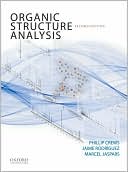Category Books
- Fiction Books & Literature
- Graphic Novels
- Horror
- Mystery & Crime
- Poetry
- Romance Books
- Science Fiction & Fantasy
- Thrillers
- Westerns
- Ages 0-2
- Ages 3-5
- Ages 6-8
- Ages 9-12
- Teens
- Children's Books
- African Americans
- Antiques & Collectibles
- Art, Architecture & Photography
- Bibles & Bible Studies
- Biography
- Business Books
- Christianity
- Computer Books & Technology Books
- Cookbooks, Food & Wine
- Crafts & Hobbies Books
- Education & Teaching
- Engineering
- Entertainment
- Foreign Languages
- Game Books
- Gay & Lesbian
- Health Books, Diet & Fitness Books
- History
- Home & Garden
- Humor Books
- Judaism & Judaica
- Law
- Medical Books
- New Age & Spirituality
- Nonfiction
- Parenting & Family
- Pets
- Philosophy
- Political Books & Current Events Books
- Psychology & Psychotherapy
- Reference
- Religion Books
- Science & Nature
- Self Improvement
- Sex & Relationships
- Social Sciences
- Sports & Adventure
- Study Guides & Test Prep
- Travel
- True Crime
- Weddings
- Women's Studies
Organic Structure Analysis » (2nd Edition)

Authors: Phillip Crews, Jaime Rodriguez, Marcel Jaspars
ISBN-13: 9780195336047, ISBN-10: 0195336046
Format: Hardcover
Publisher: Oxford University Press, USA
Date Published: October 2009
Edition: 2nd Edition
Author Biography: Phillip Crews
all in the Department of Chemistry at University of California, Santa Cruz
Book Synopsis
Organic Structure Analysis is an ideal text for upper-level undergraduate and first-year graduate courses in organic spectroscopy. It provides students with the background necessary to effectively apply spectroscopic data in establishing features of molecular structure. Unique in its coverage, it is the only text that emphasizes strategies, interpretation, modern techniques, and problem solving. The text's major aim is to show how spectra can be efficiently examined in order to identify a molecule's major structural elements. It focuses on four techniques which are used on a day-to-day basis by most organic chemists: nuclear magnetic resonance (NMR), mass spectroscopy (MS), infrared (IR), and ultraviolet-visible (UV-VIS). Each chapter provides different perspectives on using spectroscopic data in a step-by-step process to establish structural features such as an overall carbon framework; the presence and location of functional groups; the regiochemistry and stereochemistry of substituents; and, finally, the absolute stereochemistry of chiral centers. Recent advances in NMR and MS have changed the way these components are introduced and used in organic spectroscopy courses. Unlike similar texts, this book provides ample, up-to-date coverage of the latest developments in NMR and MS techniques.
Organic Structure Analysis adopts a practical approach to the subject which emphasizes building experience; the authors recognize that a combination of problem solving, access to data from models, and understanding the rules of spectral interpretation helps students to build expertise in structure determination from spectra. It outlines elements of theory, but with an emphasis on those directly relevant to spectral interpretation. The text is divided into three major sections; the first section provides extensive coverage of each of the individual methods, the second section illustrates how the strategies of organic structure are actually applied in ten problems whose solutions are provided, and the third section consists of fifty unsolved problems which range from simple monofunctional compounds to complex natural products.
Table of Contents
Ch. 1 Using Spectroscopic and Analytical Data in Organic Structure Analysis
Ch. 2 Introduction to Nuclear Magnetic Resonance
Ch. 3 Interpretation and Use of Proton and Carbon Chemical Shifts
Ch. 4 Interpretation and Use of Proton and Carbon Coupling Constants
Ch. 5 Multiple-Pulse and Multidimensional NMR Techniques
Ch. 6 Mass Spectrometry: Core Techniques and Ionization Processes
Ch. 7 Mass Spectrometry Analysis of Small and Large Molecules
Ch. 8 Fragmentation Processes in Electron Ionization Mass Spectrometry
Ch. 9 Infrared Spectroscopy
Ch. 10 Optical and Chiroptical Techniques: Ultraviolet Spectroscopy
Ch. 11 Strategies of Determining Structure and Stereochemistry: Spectroscopic Data Translated Into Structures
Ch. 12 Problems in Organicstructure Analysis
Appendix A Collection of Spectra or Data Tables
Appendix B Shape of MS Clusters
Appendix C CAS Registry Numbers for Unknowns
Appendix D Glossary and Abbreviations
Index
Subjects
 Chemistry
Chemistry  Analytical Chemistry - General & Miscellaneous
Analytical Chemistry - General & MiscellaneousScience & Nature
 Chemistry
Chemistry  Chemical Compounds & Molecules - Organic
Chemical Compounds & Molecules - OrganicScience & Nature
 Physics
Physics  Physics of Light - Spectrum Analysis
Physics of Light - Spectrum AnalysisScience & Nature
 All Science & Nature
All Science & Nature  Chemistry - General and miscellaneous
Chemistry - General and miscellaneousScience & Nature
 All Science & Nature
All Science & Nature  Physics
PhysicsNonfiction
 Science & Nature
Science & Nature  Chemistry
ChemistryNonfiction
 Science & Nature
Science & Nature  Physics
PhysicsNonfiction
 Science & Nature
Science & Nature  All Science & Nature
All Science & Nature
